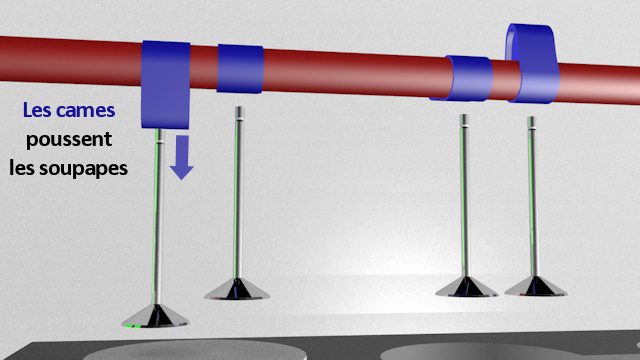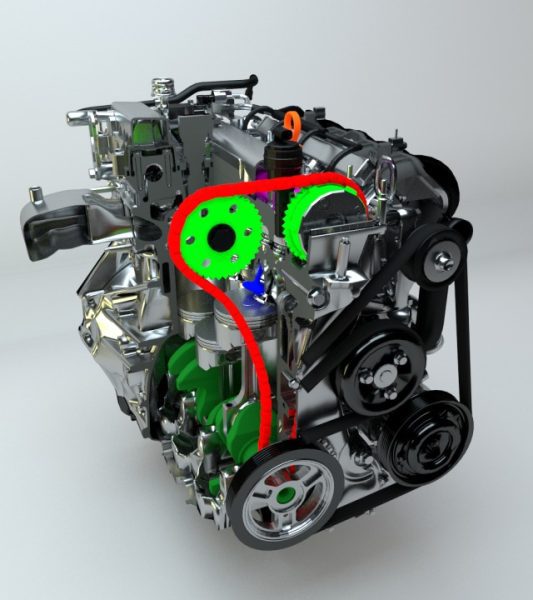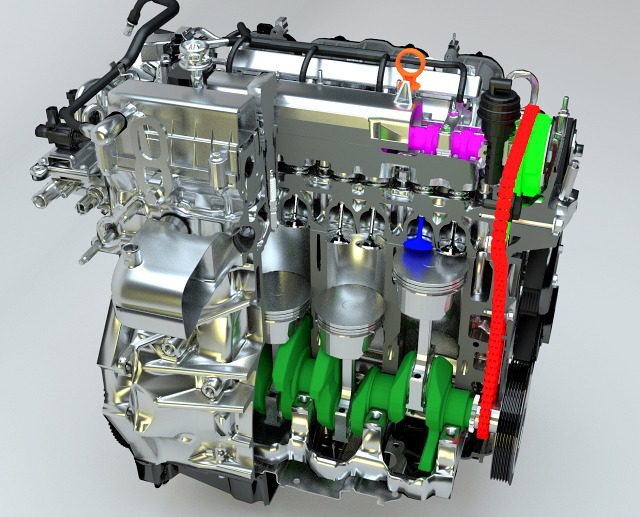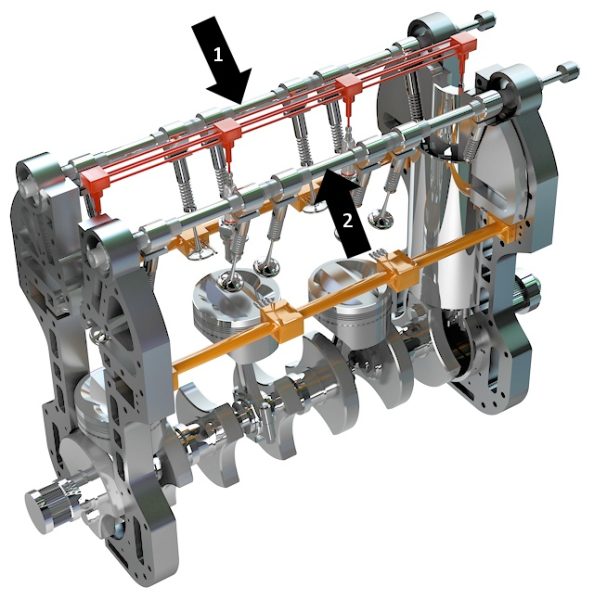
Double overhead camshaft: explanation
That expression everyone has heard before is the famous double overhead camshaft. An expression that is also known as "16 valves" but which most people (and it's okay) don't really know what it means... So let's take a little tour of this shaft system. With cam history to flesh out your car culture.
Camshaft?
When rotating synchronously with the crankshaft (synchronization is carried out by distribution), the camshaft acts as intake valves (where air + fuel enters) and exhaust valves (where gases go).

Here is the engine with
only one
camshaft

Here we see close to the cams that push the valves downward, causing an opening in the combustion chamber (either to the intake or to the exhaust).
For example, for a 4-cylinder in-line engine (pretty much everything that works in France), one camshaft is enough to control two valves per cylinder.

Typically, "classic" engines use only one pulley (LIGHT green). Here on this Mazda engine, we can see that there are two of them. This shows that the two camshafts are animated.

From this other angle (movement to the left) we can briefly see one of the two camshafts (in pink).
The second is not visible
because it's "cut out" so you can see the inside of the engine (however you can see the hole it fits in, look). Dark green is the crankshaft, blue is one of the valves, and red is the timing chain. Note that we only see the exhaust valves here because the rest were removed for the same reason as the second camshaft.

Double? What are the benefits?
You will understand that a double camshaft has two instead of one. And here are the advantages of this technical solution:
- There are more valves, which allows the engine to breathe better.
- This type of mechanics is better suited for high speeds, which is ideal for high performance engines (mainly gasoline, because liquid fuel never reaches high rpms).
- This arrangement makes engine design more convenient for engineers (distribution design, space for large spark plugs, etc., because instead of being at the top in the middle, one on each side)
In general, a twin shaft engine will have 4 valves per cylinder (usually two, ie 8 valves per 4 cylinders, because 4 X 2 = 8 ...), but this is not necessary.
But be careful! A V6 or V8 with two camshafts is not considered a double overhead camshaft. To do this, there must be two cylinders in each row of cylinders.
All comments and reactions
Dernier comment posted:
Khedir (Date: 2021, 03:19:09)
It really suits me
Il I. 2 reaction (s) to this comment:
(Your post will be visible under the comment after verification)
Write a comment
What Causes You to Pass the Fire Radar
